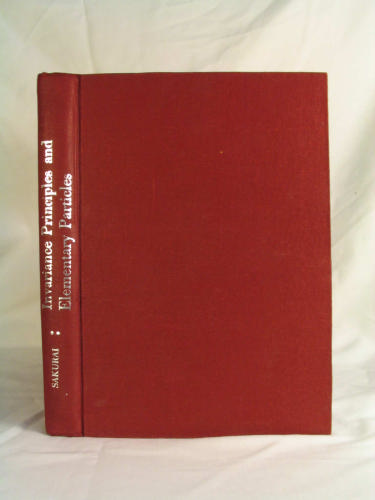Invariance Principles and Elementary Particles download
Par ladner gerard le vendredi, août 5 2016, 08:24 - Lien permanent
Invariance Principles and Elementary Particles by Sakurai J.J.


Invariance Principles and Elementary Particles Sakurai J.J. ebook
Page: 338
Publisher: PUP
ISBN: 0691079870, 9780691079875
Format: djvu
Hence a full Poincare invariance results meaning the emergence of conserved four-momentum identifiable as inertial four-momentum assignable to the preferred extremals of Kähler action defining Bohr orbits. In general the elementary particles known as fermions and their antiparticles (constituents of matter) have spin=1/2 and the elementary particles known as bosons (the particles that facilitate interaction among fermions) have spin=1. �This principle is invariant for any kind of coordinates transformation (any kind of coordinate system) •This principle can be expressed also for non-mechanical systems (thermodynamic systems, electromagnetic fields, elementary particle fields). All the current theories, as Quantum Field Theory, Nuclear Physics, Particle Physics, Standard Model, etc., all they keep the fundamental principles of Quantum Mechanics. Covariance, also called the principle of relativity, that is, the underlying axiom of the theory of relativity. For individual particles almost to 1 part per million. K can produce large time-shifts. Parton dynamics is associated with a given future/past light-cone. Basically this means that according to pre-higgs Pretty basic stuff here but it is important to note that this principle applies across the board, from a marble rolling around in a bowl until it find the bottom to quarks oscillating on the lowest energy point on a gauge field. The laws of nature are to underlie explanations of all matter from the domain of elementary particles to that of cosmology. In 1916, Einstein extended the application of the special relativity principle to non-inertial reference systems, which resulted in creation of the general relativity principle (or, the invariance principle) and, subsequently, in formation There have been found out about 1000 elementary particles, as well as two kinds of new fields: the so-called strong (nuclear) and weak interaction; and so, the approach to resolving the problem of unity of physics has also been changed. Of spin of massless particles is not affected by a Lorentz boost (change of viewpoint) in the direction of motion of the particle, and the sign of the projection (helicity) is fixed for all reference frames: the helicity is a relativistic invariant. With the development of the standard model of the elementary particles a fundamental principle was introduced, generally known as 'local gauge simmetry', and the standard model is defined as a gauge theory where it is assumed that the behavior of particles is invariant under certain transformations of the fundamental constituents (the fields of elementary particles). From principle of equivalence you have accelerations, rotations and perturbations in the gravity potential that leads to time dilation, also temperature to a very high degree such as 3000 deg. Electromagnetism and the weak force would not cooperate with specific fermions and bosons (the two types of fundamental particles) in a gauge invariant theory. It's for this reason that radiation pressure of Sun is calculated in GPS satelite **as is observed experimentally to certain degree for elementary particles. These light-cones give rise to Russian doll cosmology with cosmologies within cosmologies such that elementary particles formally correspond to the lowest level in the hierarchy.